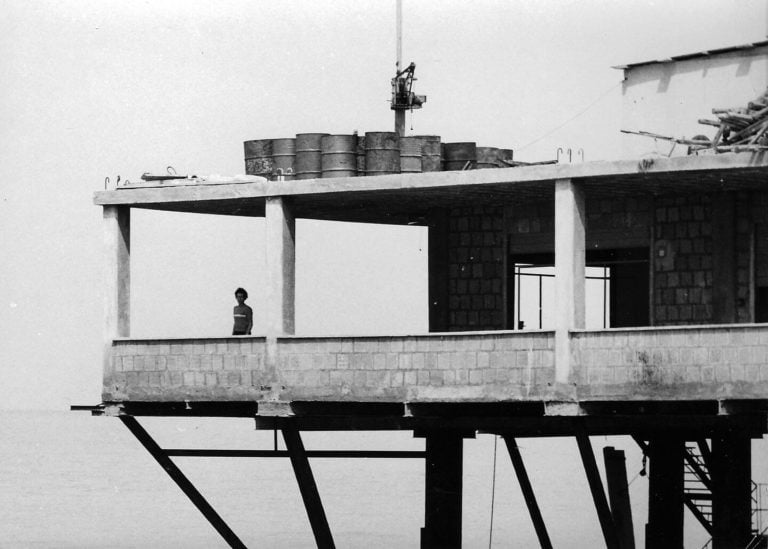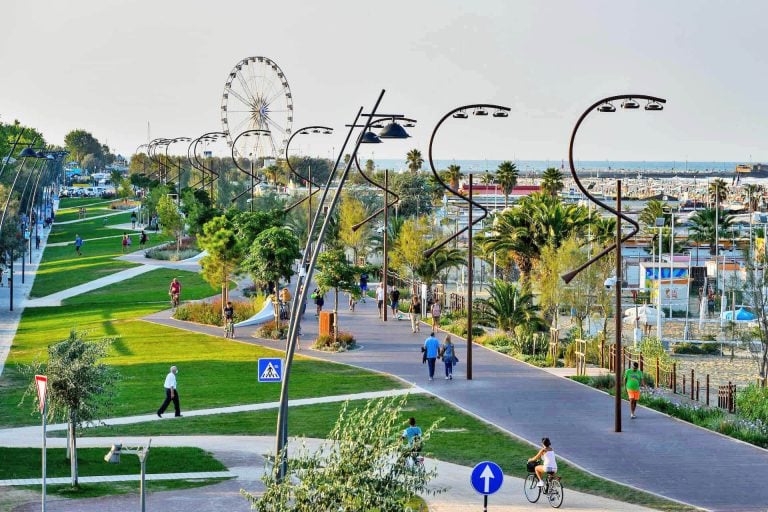If we say Romagna Riviera, what comes to mind?
This stretch of the Adriatic coast and its multiple resorts cannot but be defined as variable and multifaceted.
The image of the Romagna Riviera originates in the 19th century, but it wasn’t until the 20th century that its fame was officially established at an international level.
Let’s embark on a journey through the history of the Romagna Riviera, from the birth of the first bathing establishments to the development of mass tourism in the 1950s.
The Romagna Riviera in the 19th Century, Between Bath Therapy and Recreation
What did the Emilia-Romagna coastline look like before it became the famous Romagna Riviera we all know?
At one time, the beaches were wild and uncrowded places. Some of them were even backed by luxuriant pinewoods, such as those we can still admire today in Ravenna, that used to separate them from the villages.
Evidently, they had nothing to do with today’s crowded beaches.That’s because at the beginning of the 19th century the beach and the sea had a different meaning compared to what we see in them today, basically fun and relaxation.
At that time, activities such as sunbathing on the beach or having a refreshing swim in the sea were simply not contemplated.
Nevertheless, this century was crucial for the ‘discovery’ of the sea as we understand it today. While until the early 19th century hydrotherapy and bathing were only carried out in thermal waters in Italy, around the 1830s these activities moved to the seashore, thus laying the foundations for the birth of future seaside tourism.
And here’s another substantial difference with today’s beach life. At that time, the waters of the sea were exclusively used for therapeutic purposes, for example in the prevention of scrofula, a quite common disease in the XXth century.
But this will not be the case for much longer.
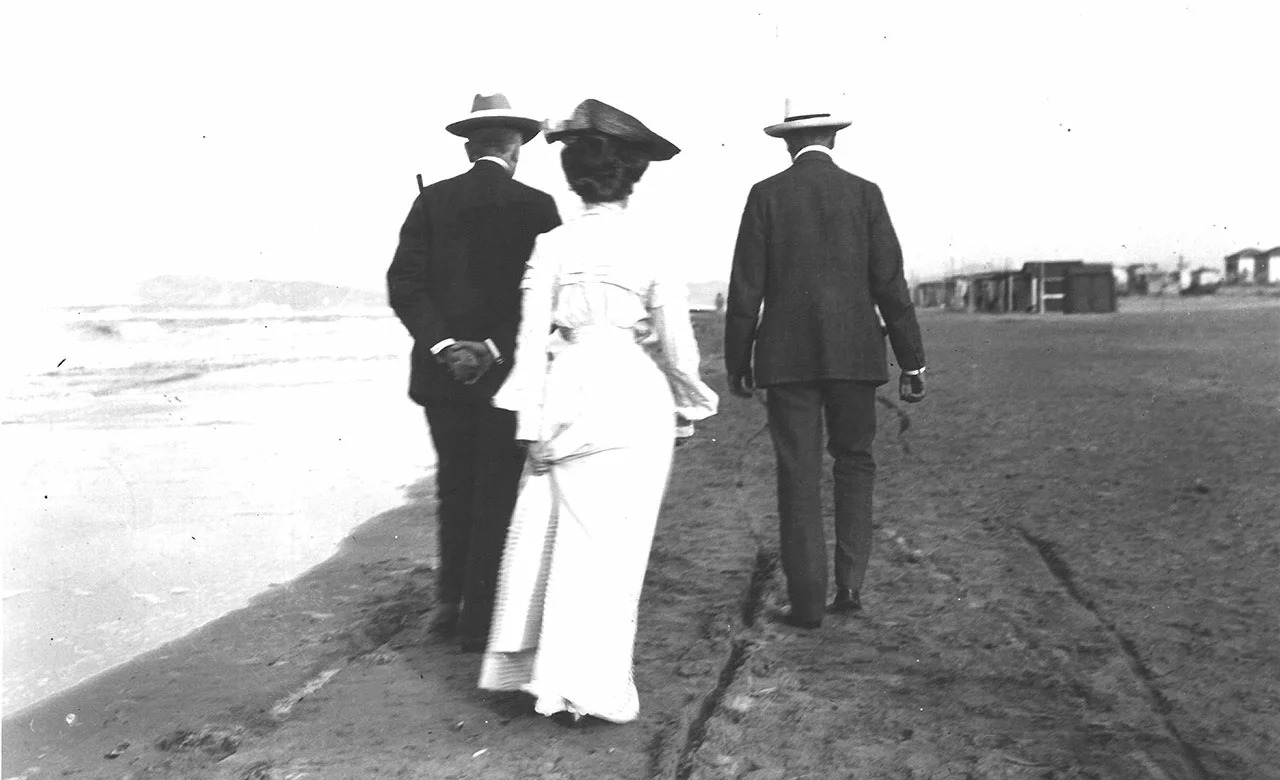
It was Rimini that set the stage for change on the Riviera, thanks to its strategic position on the Bologna-Ancona railway line that opened in 1861.
After the poor success of the first beach facilities founded by the Baldini counts in the 1840s, the Kursaal opened in 1873.
It was an imposing building with a ballroom, games rooms, a restaurant and a bar, but the project also included a bathing establishment and a home for children suffering from scrofula.
A perfect mix of therapy and recreation, paving the way for a new concept of seaside holidays based on pure enjoyment and the pleasures of beach life.
Five years later, Cesenatico had its first facilities too, followed by Cervia in 1882.
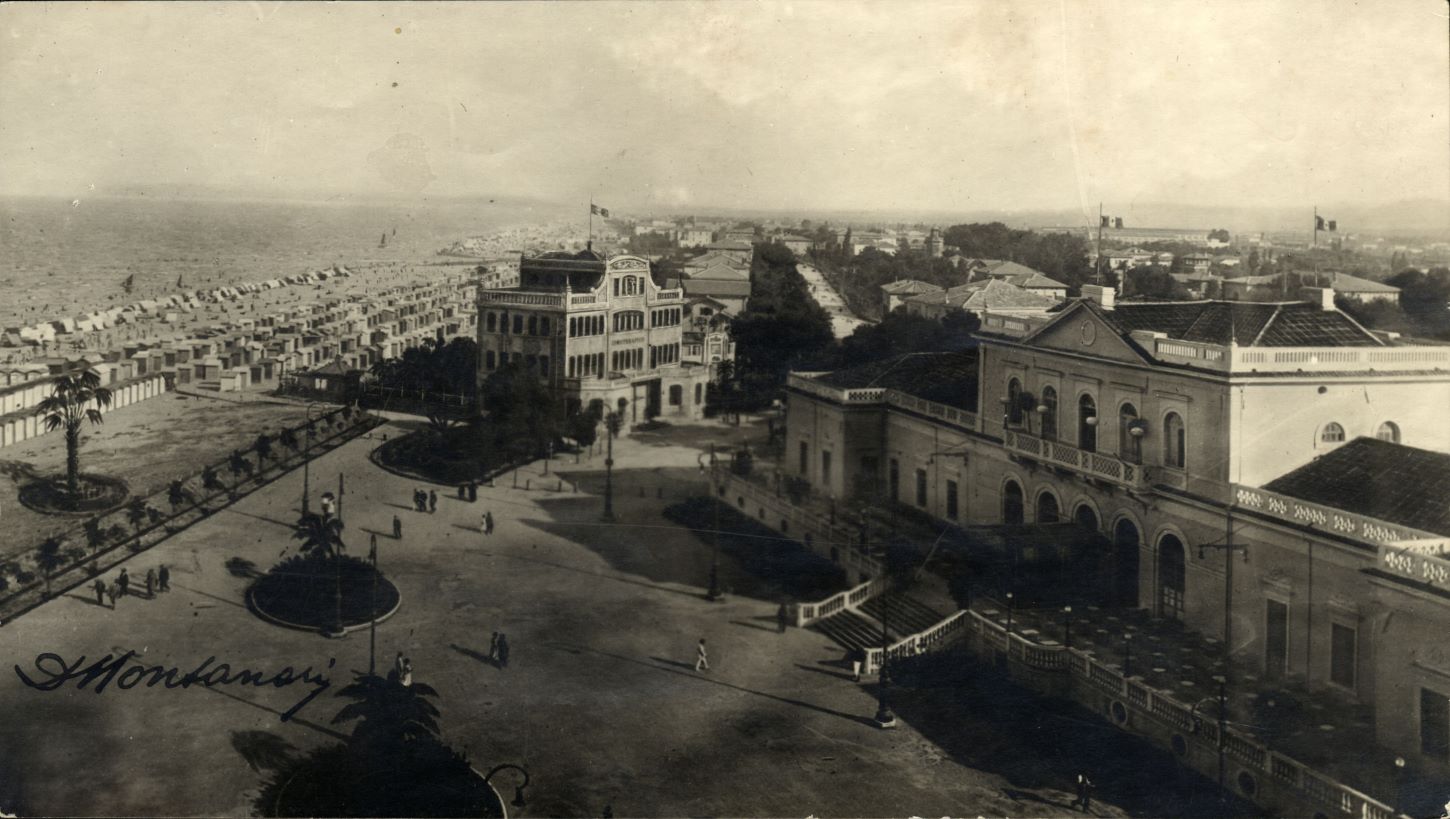
The First Summer Holidays on the Riviera
We’re now at the beginning of the 20th century, a time of changes for the fate of the Romagna Riviera.
From an architectural point of view, the coast began to fill up with Art Nouveau villas – there were about 200 in the Rimini area in the early 20th century – and beach facilities.
Hotels weren’t numerous on the Riviera yet, although Rimini’s legendary Grand Hotel was opened in 1907 followed by the Grand Hotel Hungaria that no longer exists. These kinds of luxurious properties were essential to attract international tourists; at the same time, Rimini was already imposing itself as an important seaside resort on the national scene.
Renowned for its saltworks, even the ancient town of Cervia couldn’t resist the phenomenon of small villas, which boosted in the years leading up to the First World War.
Thus the new district of Milano Marittima was born, built on the initiative of a Milanese company on a vast uncultivated area of the coastline. The upper middle class of Milan itself chose it as its residence for the summer.
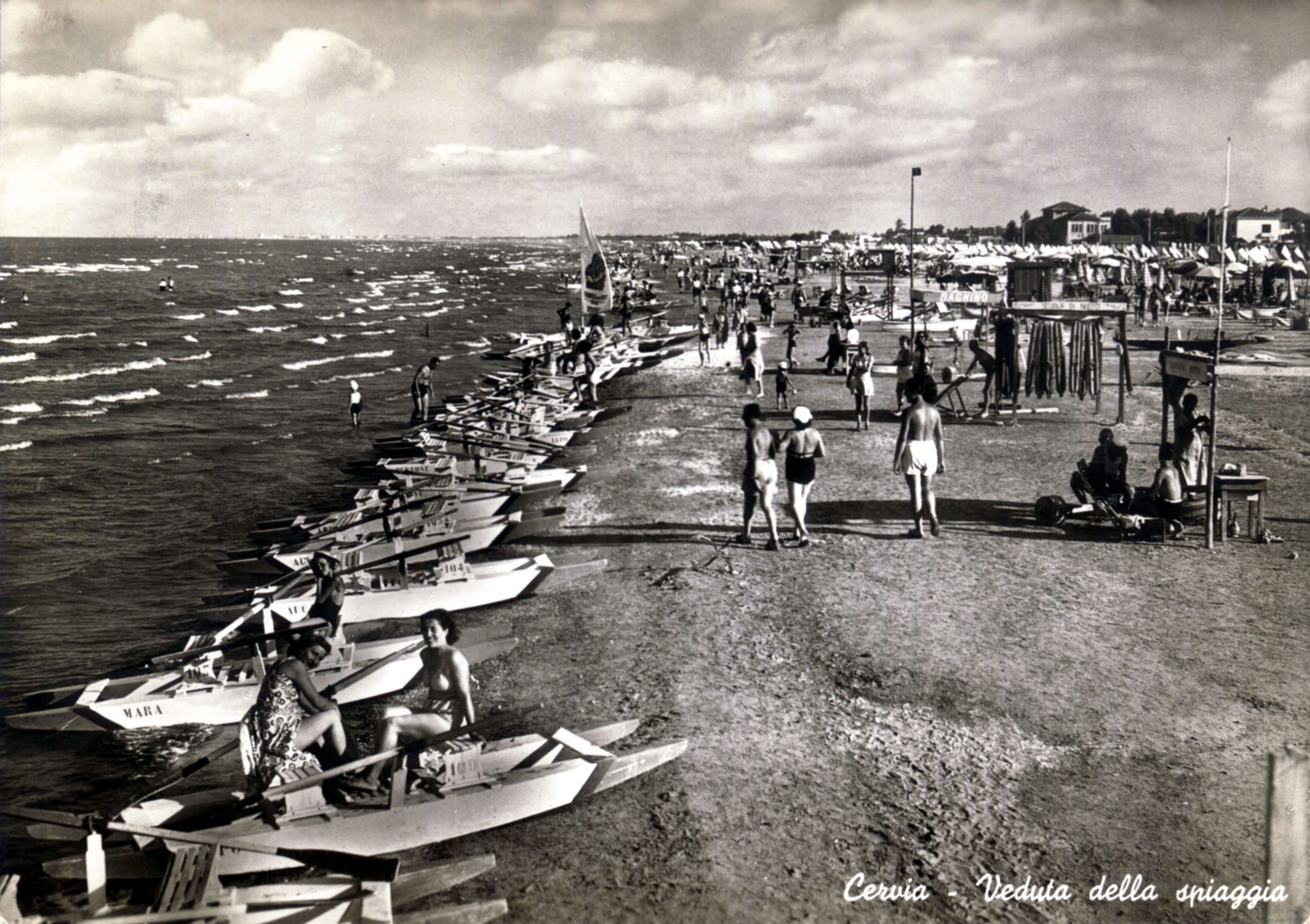
The Romagna Riviera does not end with Cervia, Cesenatico and Rimini, but it’s not surprising If we haven’t mentioned the coast of Ravenna and Ferrara yet. Many of the lidos now located in the northern part of the Adriatic were built from the 1950s onwards, a time when they started to fill up with second homes and, to a lesser extent, small hotels.
As for the holidaymakers, they were affected by a significant change too. After the setback of the Great War, the 1920s and 1930s marked the transition from an elitist type of holiday to the holiday of the middle-class, and spending the summer at the seaside turned into a way to express the need to escape from the city.
The beach now represented fun and sport, as well as a place beneficial to health, three concepts that would later be reinforced during fascism.
The 1950s and Mass Tourism
The development of a new class of entrepreneurs, the foundation of tourism organisations, the strengthening of road and air connections.
Soon after World War II, these were the key factors that contributed to the advent of so-called mass tourism on the Romagna Riviera. This form of tourism is generally associated with negative connotations today, yet it played a decisive role in the success of the Adriatic coast on the national tourist scene at the time.
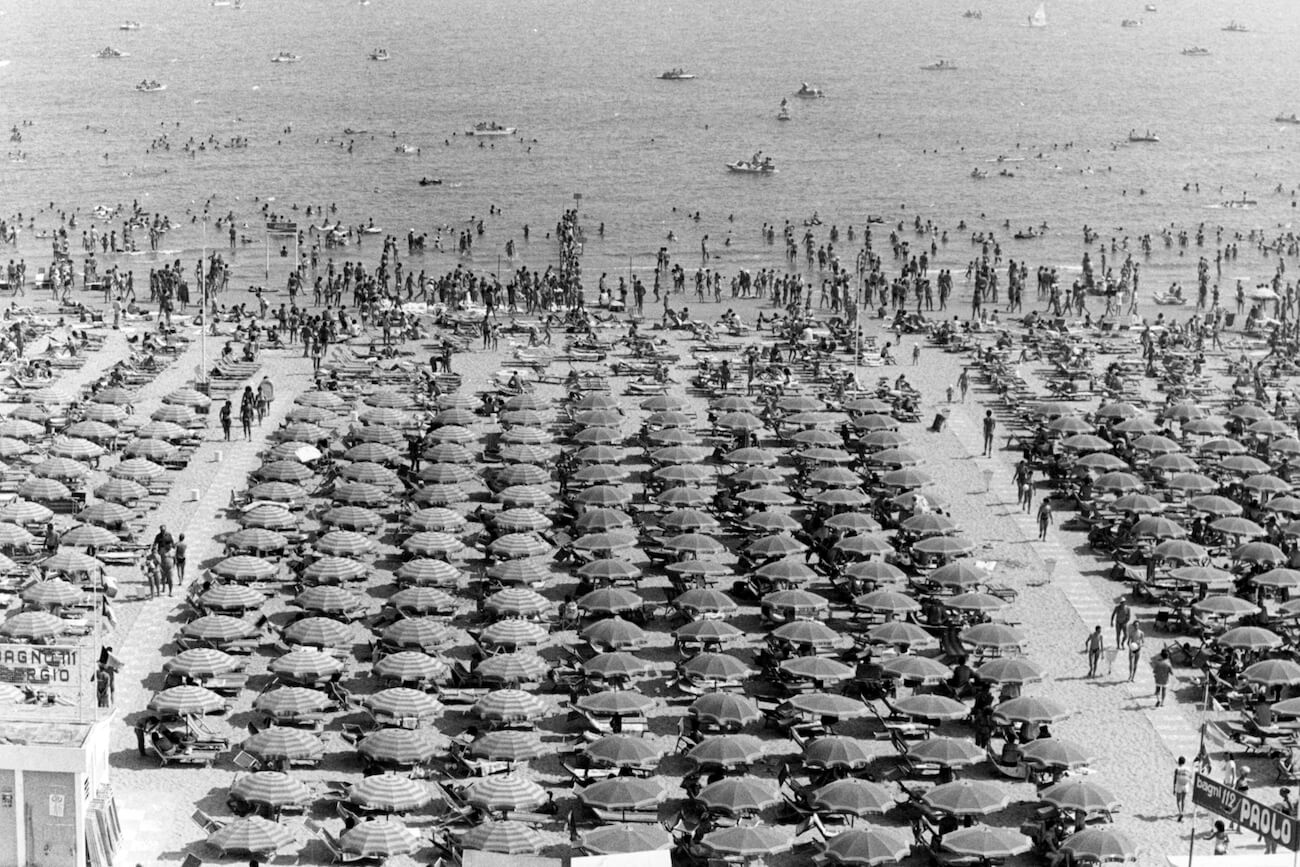
But what exactly has the arrival of mass tourism meant for the Romagna Riviera?
On the one hand, the growth of domestic tourism. While the post-World War II era corresponded with a recovery of European tourist flows to the Riviera, domestic tourism imposed itself strongly over time, especially since the late 1960s.
A growing number of families and young people arrived on the beaches of Romagna, attracted by the affordable prices and the welcoming accommodation facilities.
Then there was coastal urbanisation. New hotels, pensions and houses were needed to accommodate the increasing number of tourists, and thus the construction began in the 1950s.
New villages were built from scratch such as Lido di Classe, Lido di Savio and Marina Romea on the Ravenna coast, and the same happened on the Ferrara beaches.
Skyscrapers were erected too such as the ones in Cesenatico, Milano Marittima and Rimini, built on the model of North American towers.
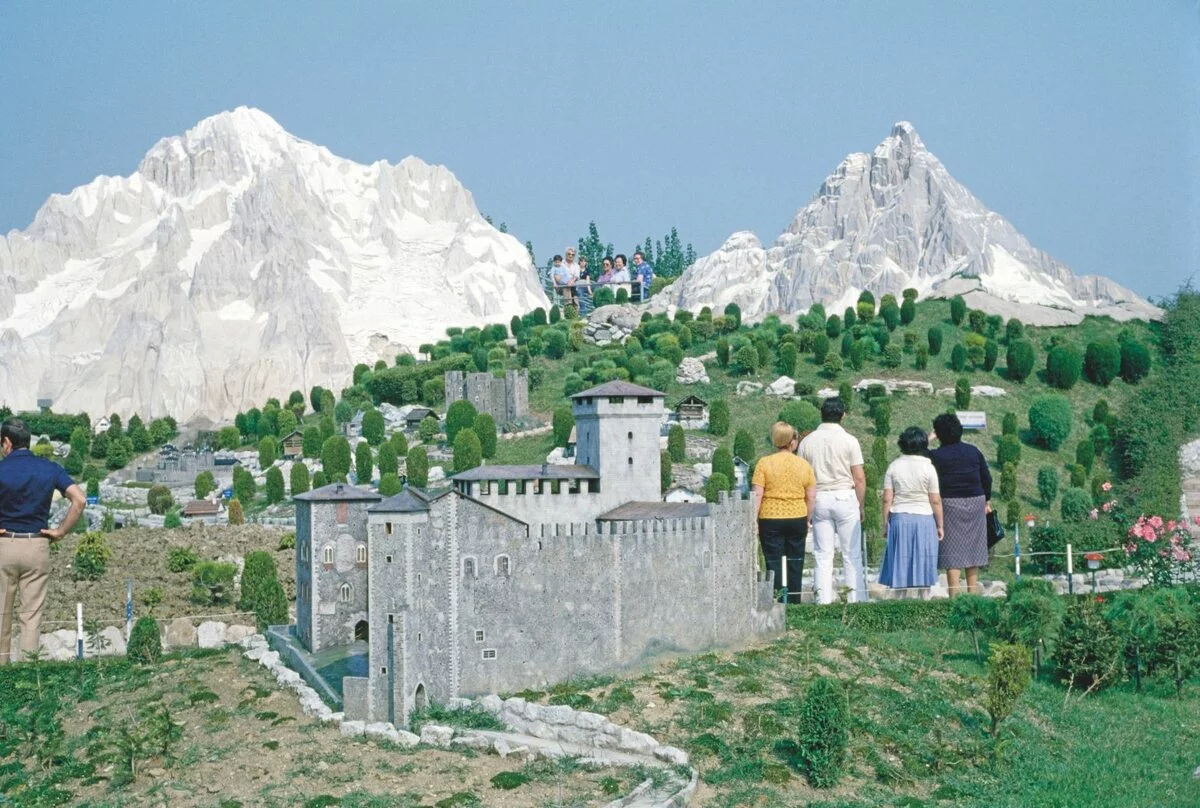
Finally, the offer of entertainment became more and more extensive. These years laid the foundations for the 1970s “divertimentificio”, the Romagna Riviera amusement industry.
The tourist offer was more and more directed towards leisure and entertainment for all tastes and ages. Taking overseas theme parks as an example, Cesenatico and Riccione opened their first aquariums, while the themed park Fiabilandia opened in Rimini in 1966 and Italia in Miniatura in 1970. Plus, a large number of amusement arcades and discotheques appeared on the coast.
From the 1970s to the present, the Riviera has been able to further transform its face to adapt to the rapid changes in society and face the challenges that have arisen, such as the mucilage of 1989 and fierce competition from other Mediterranean destinations.
This process of constant evolution has not yet stopped, as witnessed by the recent restyling of the Rimini, Ravenna, Misano Adriatico and Milano Marittima seafronts. What will be next?
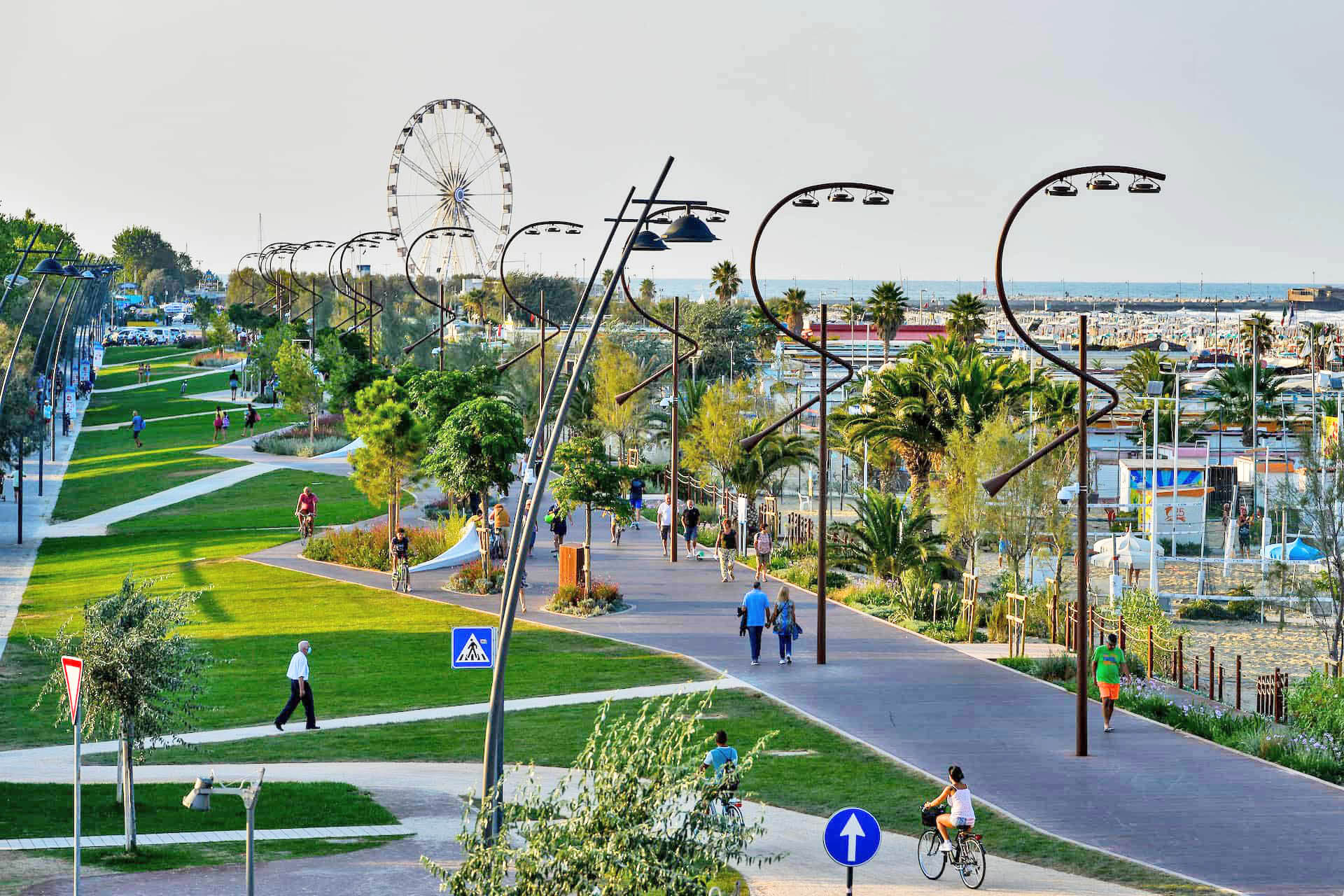
Author

Maria Grazia Masotti
An eternal dreamer, but I try to stay grounded. I was raised in the countryside but I love big cities. I’m always ready for a trip, as long as it’s sustainable.
You may also like
The Romagna Riviera, Italy’s Longest and Prettiest Promenade
by Davide Marino /// June 13, 2023

Interested in our newsletter?
Every first of the month, an email (in Italian) with selected contents and upcoming events.

